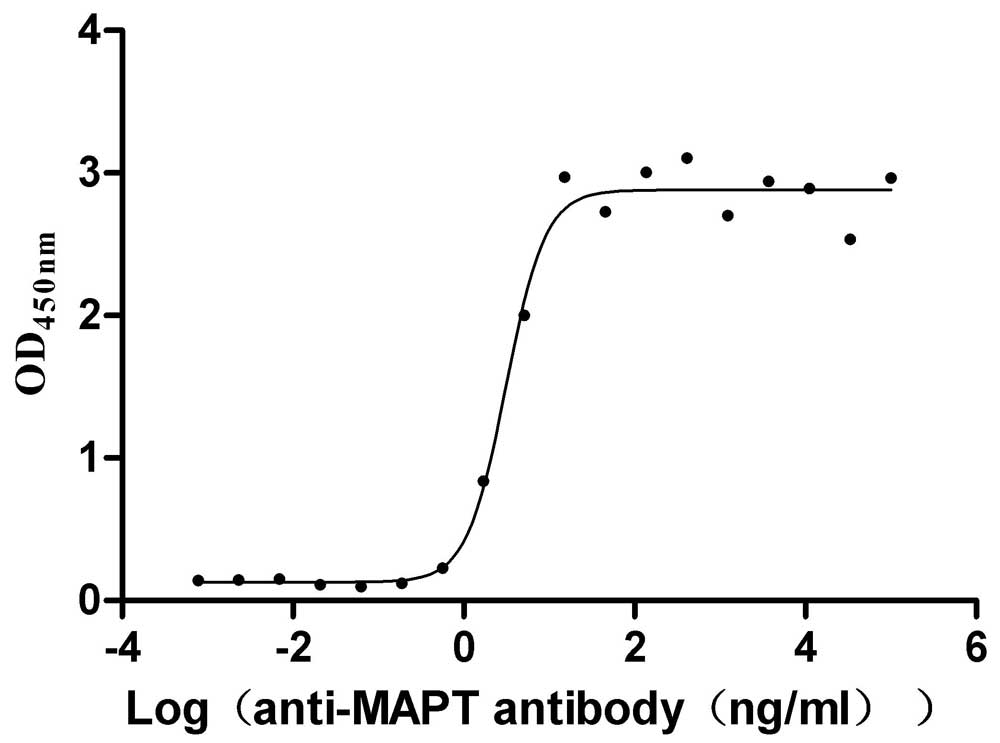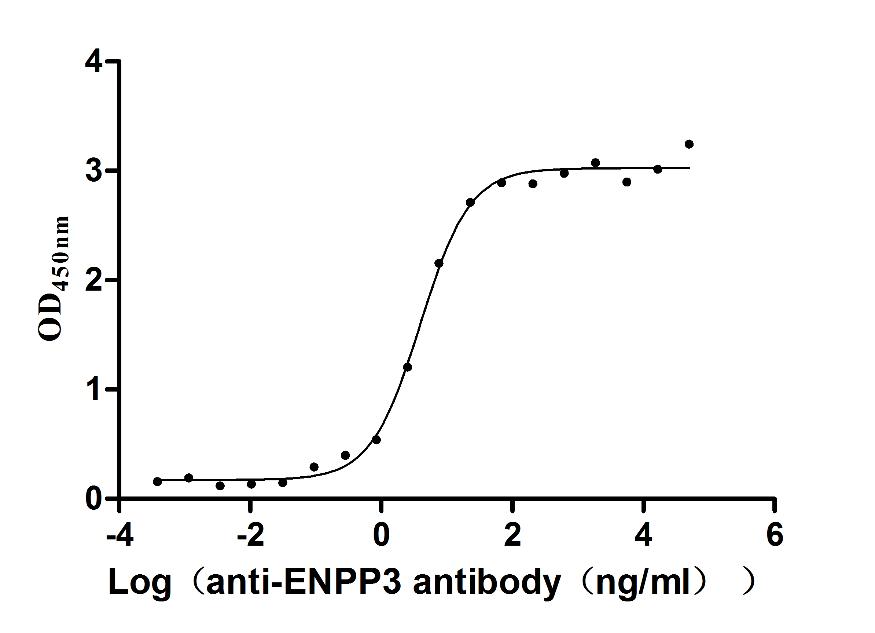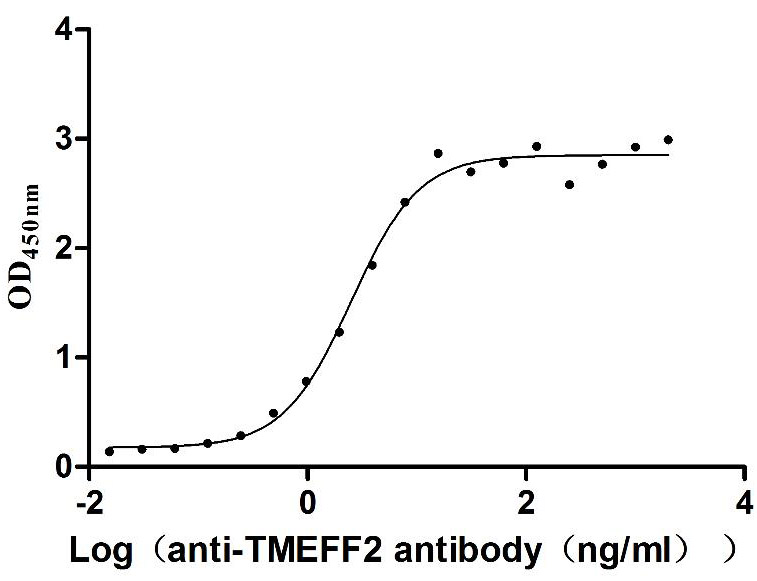Recombinant Mouse Cell death activator CIDE-A (Cidea)
-
货号:CSB-YP005431MO
-
规格:
-
来源:Yeast
-
其他:
-
货号:CSB-EP005431MO
-
规格:
-
来源:E.coli
-
其他:
-
货号:CSB-EP005431MO-B
-
规格:
-
来源:E.coli
-
共轭:Avi-tag Biotinylated
E. coli biotin ligase (BirA) is highly specific in covalently attaching biotin to the 15 amino acid AviTag peptide. This recombinant protein was biotinylated in vivo by AviTag-BirA technology, which method is BriA catalyzes amide linkage between the biotin and the specific lysine of the AviTag.
-
其他:
-
货号:CSB-BP005431MO
-
规格:
-
来源:Baculovirus
-
其他:
-
货号:CSB-MP005431MO
-
规格:
-
来源:Mammalian cell
-
其他:
产品详情
-
纯度:>85% (SDS-PAGE)
-
基因名:Cidea
-
Uniprot No.:
-
别名:CideaCell death activator CIDE-A; Cell death-inducing DFFA-like effector A
-
种属:Mus musculus (Mouse)
-
蛋白长度:Full length protein
-
表达区域:1-217
-
氨基酸序列METARDYAGA LIRPLTFMGL QTKKVLLTPL IHPARPFRVS NHDRSSRRGV MASSLQELIS KTLDVLVITT GLVTLVLEED GTVVDTEEFF QTLRDNTHFM ILEKGQKWTP GSKYVPVCKQ PKKSGIARVT FDLYRLNPKD FLGCLNVKAT MYEMYSVSYD IRCTSFKAVL RNLLRFMSYA AQMTGQFLVY AGTYMLRVLG DTEEQPSPKP STKGWFM
-
蛋白标签:Tag type will be determined during the manufacturing process.
The tag type will be determined during production process. If you have specified tag type, please tell us and we will develop the specified tag preferentially. -
产品提供形式:Lyophilized powder
Note: We will preferentially ship the format that we have in stock, however, if you have any special requirement for the format, please remark your requirement when placing the order, we will prepare according to your demand. -
复溶:We recommend that this vial be briefly centrifuged prior to opening to bring the contents to the bottom. Please reconstitute protein in deionized sterile water to a concentration of 0.1-1.0 mg/mL.We recommend to add 5-50% of glycerol (final concentration) and aliquot for long-term storage at -20℃/-80℃. Our default final concentration of glycerol is 50%. Customers could use it as reference.
-
储存条件:Store at -20°C/-80°C upon receipt, aliquoting is necessary for mutiple use. Avoid repeated freeze-thaw cycles.
-
保质期:The shelf life is related to many factors, storage state, buffer ingredients, storage temperature and the stability of the protein itself.
Generally, the shelf life of liquid form is 6 months at -20°C/-80°C. The shelf life of lyophilized form is 12 months at -20°C/-80°C. -
货期:Delivery time may differ from different purchasing way or location, please kindly consult your local distributors for specific delivery time.Note: All of our proteins are default shipped with normal blue ice packs, if you request to ship with dry ice, please communicate with us in advance and extra fees will be charged.
-
注意事项:Repeated freezing and thawing is not recommended. Store working aliquots at 4°C for up to one week.
-
Datasheet :Please contact us to get it.
靶点详情
-
功能:Binds to lipid droplets and regulates their enlargement, thereby restricting lipolysis and favoring storage. At focal contact sites between lipid droplets, promotes directional net neutral lipid transfer from the smaller to larger lipid droplets. The transfer direction may be driven by the internal pressure difference between the contacting lipid droplet pair and occurs at a lower rate than that promoted by CIDEC. Acts as a CEBPB coactivator in mammary epithelial cells to control the expression of a subset of CEBPB downstream target genes, including ID2, IGF1, PRLR, SOCS1, SOCS3, XDH, but not casein. By interacting with CEBPB, strengthens the association of CEBPB with the XDH promoter, increases histone acetylation and dissociates HDAC1 from the promoter. When overexpressed, induces apoptosis. The physiological significance of its role in apoptosis is unclear.
-
基因功能参考文献:
- our findings suggest that Cidea is highly associated with alcoholic fatty liver disease and Cidea expression is specifically induced by acetaldehyde, and this up-regulation is most likely mediated by SREBP1c. PMID: 29352167
- results suggest that FSP27beta negatively regulates CideA-promoted enlargement of lipid droplet size in brown adipocytes. PMID: 28490632
- The s show demonstrate an essential role of an amphipathic helix in CIDEA, which facilitates embedding in the lipid droplet phospholipid monolayer and binds phosphatidic acid (PA). PMID: 26609809
- Data (including data from studies in knockout mice) suggest Cideb promotes lipid storage as droplets in hepatocytes under normal diet conditions; Cidea/Cidec promote fusion of lipid droplets leading to liver steatosis in fasting (16h) and obese mice. PMID: 26733203
- Cidea is highly associated with adiposity and insulin resistance, whereas Cidec is related to insulin sensitivity PMID: 26176546
- data reveal an important role of Cidea in controlling lipid droplet fusion, lipid storage in brown and white adipose tissue, and the development of obesity PMID: 24369348
- maternal diet modulates the age-associated changes in Cidea expression leading to the development of fatty liver PMID: 24481968
- Cidea is a crucial regulator of sebaceous gland lipid storage and sebum lipid secretion in mice. PMID: 24636991
- acts as transcriptional coactivator of C/EBPbeta in mammary glands to control lipid secretion PMID: 22245780
- Cidea is a critical regulator of free fatty acid-induced apoptosis as a novel downstream target for Foxo1 in pancreatic beta-cells PMID: 21945815
- These data indicate that the carboxy-terminal domain of Cidea directs lipid droplet targeting, lipid droplet clustering, and triglyceride accumulation, whereas the amino terminal domain is required for Cidea-mediated development of enlarged lipid droplets PMID: 20810722
- Cide-a and Cide-c are closely involved in the progression of hepatic steatosis, and that EPA inhibits Cide-a gene expression through SREBP-1 regulation. PMID: 20542418
- a role for Cidea in regulating energy balance and adiposity PMID: 12910269
- First protein known to directly modulate Ucp1 activity in regulation of thermogenesis and development of obesity and diabetes. Review. PMID: 15063110
- The mRNA for CIDEA was expressed in brown mouse adipocytes and was not influenced by obesity. PMID: 15919794
- Cidea is a novel target gene for both PPARalpha and -gamma in the liver where these two transcription factors utilize the same PPRE region for dual regulation PMID: 17462989
- CIDE-A levels are reduced in two different mouse models of obesity and this reduction may contribute to altered lipid metabolism. PMID: 17544797
- estrogen has large effects on gene expression in white adipose tissue and GPX3 and CIDEA could be important mediators of the effects of estrogen on fat mass PMID: 18310450
- These data strongly suggest that AMPK can be regulated by Cidea-mediated ubiquitin-dependent proteosome degradation, and provide a molecular explanation for the increased energy expenditure and lean phenotype in Cidea-null mice. PMID: 18480843
- Results describe the roles of RIP140 and PGC-1alpha in controlling the expression of CIDEA, an important regulatory factor in adipose cell function and obesity. PMID: 18794372
显示更多
收起更多
-
亚细胞定位:Lipid droplet. Nucleus.
-
组织特异性:Highly expressed in brown adipose tissue and, at lower levels, in white adipose tissue (at protein level). Expressed in mammary gland during pregnancy and lactation, in epithelial cells, but not in the surrounding adipose tissue. Secreted into milk via mi
-
数据库链接:
KEGG: mmu:12683
STRING: 10090.ENSMUSP00000025404
UniGene: Mm.449
Most popular with customers
-
Recombinant Macaca mulatta Microtubule-associated protein tau (MAPT) (Active)
Express system: Mammalian cell
Species: Macaca mulatta (Rhesus macaque)
-
Express system: Mammalian cell
Species: Macaca fascicularis (Crab-eating macaque) (Cynomolgus monkey)
-
Recombinant Mouse Claudin-18 (Cldn18)-VLPs (Active)
Express system: Mammalian cell
Species: Mus musculus (Mouse)
-
Express system: Mammalian cell
Species: Homo sapiens (Human)
-
Recombinant Human Tomoregulin-2 (TMEFF2), partial (Active)
Express system: Mammalian cell
Species: Homo sapiens (Human)
-
Recombinant Human Claudin-3 (CLDN3)-VLPs (Active)
Express system: Mammalian cell
Species: Homo sapiens (Human)
-
Recombinant Human Myosin regulatory light polypeptide 9 (MYL9) (Active)
Express system: Yeast
Species: Homo sapiens (Human)
-
Recombinant Human Interleukin-2 receptor subunit alpha (IL2RA), partial (Active)
Express system: Mammalian cell
Species: Homo sapiens (Human)




-AC1.jpg)















